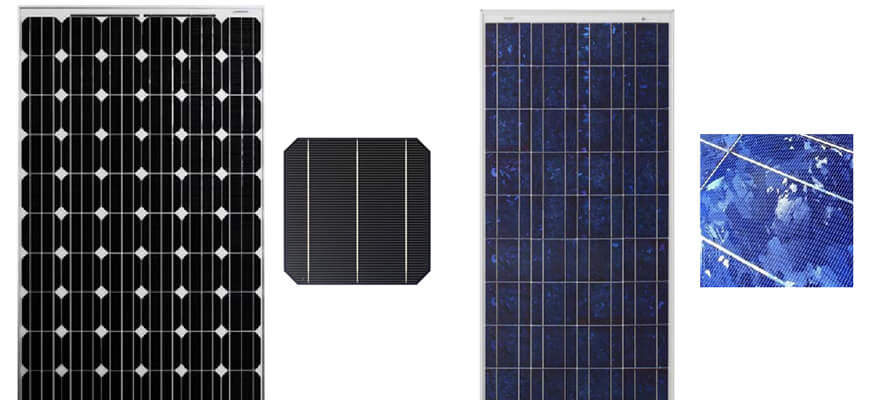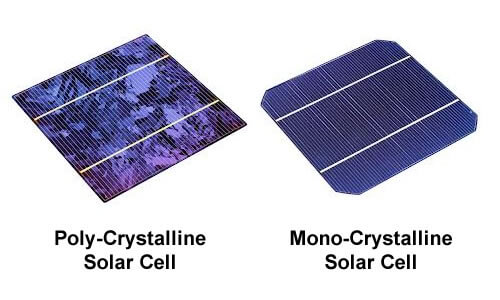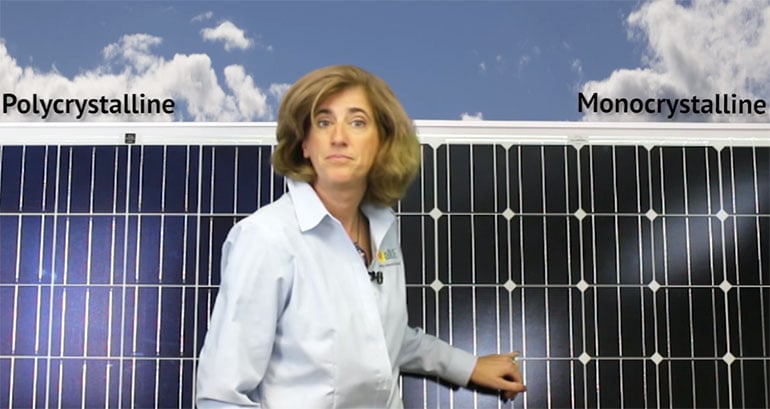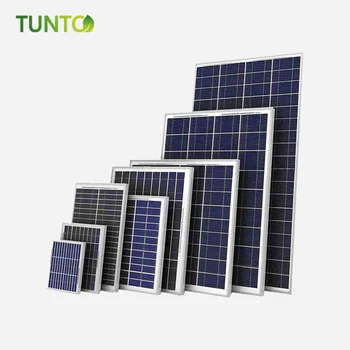Mono Vs Poly Solar Panels Shading

The older of the two mono panels are the most developed type of photovoltaic panel cells.
Mono vs poly solar panels shading. See an example of monocrystalline cells below. Thin amorphous film panel output is supposed to increase with age and heat where as output on mono poly crystalline panels loose some output with heat and time. It is mainly used in large scale commercial applications. Monocrystalline solar cells are more efficient because they are cut from a single source of silicon.
Most panels these days have bypass diodes to help with partial shading so you don t looses all the output. A mono solar panel is made with high quality silicon manufactured with intricate patterns across the surface making them easy to differentiate from poly solar panels. They typically perform better than polycrystalline alternatives albeit by a small amount. Polycrystalline solar cells are blended from multiple silicon sources and are slightly less efficient.
So that briefly covers monocrystalline vs polycrystalline. Monocrystalline solar panels have solar cells made from a single crystal of silicon while polycrystalline solar panels have solar cells made from many silicon fragments melted together. Polycrystalline silicon solar panels polycrystalline are also known as multi crystalline solar panels and unlike monocrystalline solar panels the melted silicon to produce them is poured into a square mould. Looking at mono vs poly solar panels you can see that mono crystalline panels have a smoother more uniform appearance than poly crystalline panels.
You can find a more in depth comparison of mono vs poly solar panel here. In other words you would need less monocrystalline solar panels in your solar power system to generate the same amount of power that say a greater number of polycrystalline solar panels would. Monocrystalline solar cells have historically had a higher peak efficiency and were more readily available than polysilicon solar cells. When solar pv first boomed in australia in 2009 2010 monocrystalline solar panels were thought to be superior to polycrystalline solar panels.
This silicon is then cooled and finally sliced into square wafers creating the polycrystalline shape. So monocrystalline solar panels will usually have a higher power output rating than either polycrystalline or thin film modules. There were a number of reasons for this thinking. The main difference between the two technologies is the type of silicon solar cell they use.
Amorphous solar panels. Mono panels are the most efficient since they re made with high quality silicon. Mono solar cell panels have a typical efficiency of around 15 at the 25 c mark which drops at 50 c by around 12 15. Advantages of mono solar panels.














































